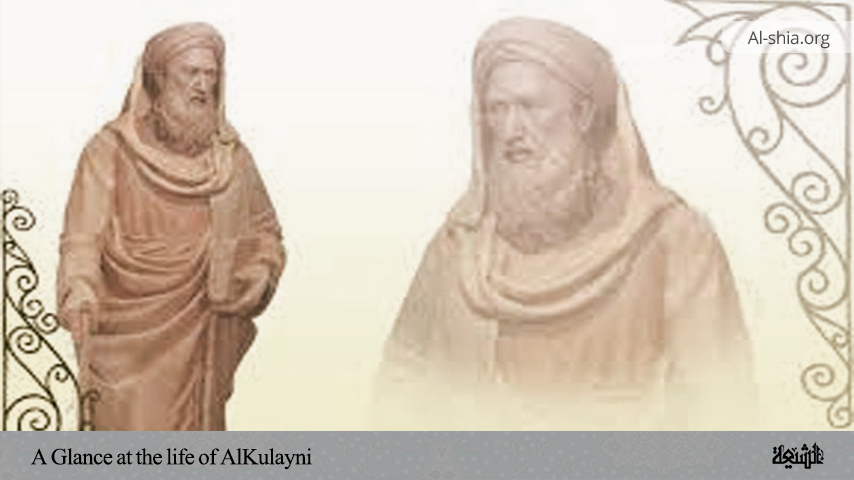The chaotic situation of the world prior to Islam is clearly reflected in the accurate mirror of history. The outline of decline, oppression, bloodshed and idol worship is evident in this mirror. Before Islam, it was as if mankind was leaning over the edge of the precipice of ruin and destruction, and there was the fear that at any moment it could roll down and be annihilated in it.
The Religions and Beliefs of the People
a) In the Arabian Peninsula
The Arabs prior to Islam were committed to idols, and not only did they lower their heads and prostrate before them, but they donated everything they had, even gifts of their agricultural produce, to their idols. (1) They believed that apart from the life of this world there was no other life. (2)
Obviously, those who did not see the wretchedness of their idols whom they had chosen as their gods could not grasp the idea and truth of the resurrection.
So, it was not a wonder that they fumed the House, which Hazrat Ibrahim had built at the command of and in the name of Allah into brightly coloured quarters for their idols.
As for the origins of idol worship in the Hijaz, some believe that the first person to introduce it was ‘Amr ibn Luhayy. Alwrites in his history: “He (ibn Luhayy) journeyed to Syria and saw all of the inhabitants worshipping idols. When he asked about the virtues of the idols, they told him, ‘They have befriended us, and they bring down rain for us.’ He took a liking to them and asked them to give him an idol. They gave him steel and he took it to Mecca.”
Ibn Hisham writes that ‘Amr ibn Luhayy brought this idol from Mu’ab (Iraq). In any case, Hubab was the most famous of the gods in the Ka’bah, he was built in the form of man, and holy arrows, which the diviners used for casting auguries, were set in front of him.
The influence of idol worship grew to the point where idols were built in the form of animals, plants, men, jinn angels and stars; even stones were the objects of worship.
‘Lat’ was in Ta’il in the form of a cubic stone and had a special field and meadow near Taif which was a holy place, and cutting trees, hunting and spilling of blood were not lawful in its vicinity; the people of Mecca and other places made a pilgrimage to it.
Uzza was a very powerful god equivalent to the planet Venus and was situated in Nakhlah east of Mecca, and was worshipped there It was given much more honour than the other idols. The sanctuary of Uzza took the form of three trees and human sacrifices were offered to it.
Manat was the god of predestination, and its original place of worship was a black stone at Qudayd (on the road between Mecca and Medina). It belonged especially to the tribes of Aws and Khazraj. These gods were female and were like angels.
Ba’l was the embodiment of the spirit of wells and underground waters. Sometimes a well with clean, invigorating water became worn- in the dry desert. A cave, when it had connections with the gods and the underground powers, was also sanctified. The temple of Ghabghab in Nakhlah (see above) was in such a place.
Dhat Anwat, from which things were hung, was in Nakhlah and in some years the Meccan made a pilgrimage there.
Dhu sh-Shard was respected in the form of a heap of black shining cubic stones.
The spirit of arable lands was the god of good works and sacrifices had to be made to it. The spirit of barren land was a wicked devil who had to be avoided.
They had idols made of wood or metal or stones with no definite form round which they made several turns whenever they went into their houses, and from which they took permission when they went out on a journey and then took with themselves.
The town of Harran where Ibrahim had started his campaign against star-worship, was the centre of the Sabaeans.
In this town, stars were the object of veneration. Belief in the stars and in the connection between the movements of the stars and earthly destiny was very strong.
Each star was the god of one event. Images of Mars, Jupiter, Venus, etc. were erected in the temples, and they asked for help from them, and sometimes sacrificed them.
The thoughts of the Sabeans sometimes fumed to angels and jinn. The angels were the daughters of god and were thought to influence events. They imagined that god had a wife who was one of the jinns. (3)
b) In Iran
In Iran also many religions were practised, but the one which most people followed was Zoroastrians, the official religion. If we accept that Zoroaster was a true prophet who had a religion based on tawhid, we must also acknowledge that his true teachings had been changed by the passage of time.
Gradually, they changed their direction and even their form and identity to the benefit of the ruling classes. A veil behind which the Magi and the priests to the advantage of themselves and the ruling classes transformed the foundations and principles covered its very general and pleasant maxims.
Thus, it was that tawhid became polytheism, and the pure sweet and excellent teachings did not stay: the shell remained, but the nut was thrown out, and the empty shells were filled with the ancient gods of the first times of the Aryan tribes.
c) In Europe
The religious situation in Europe was like it was in Iran. Christianity had given up its original form and had become stuck in polytheism and the dogma of the Trinity. In France, Britain and Spain, people did not believe in a Unique God.
d) In India
There were various religions, but idolatry prevailed
Class and Racial Differences
In Iran, people were divided into classes, and each class had special restrictions and privileges. The class connected with the ruling council had the most privileges. Similarly in Europe and India, society was divided into classes and the right to possess land, trade, and an exemption from taxes was the prerogative of the nobility. At that time also, every one of the people of the world thought themselves superior in terms of race over everyone else.
The Situation of Women in Pre-Islamic Society
In Arabia, a woman was a commodity, counted in the wealth of the father, husband or son; and after death, she was inherited like the other possessions and became the property of the descendants. It was a disgrace to have a daughter, and in some tribes, the family buried this shameful thing with their own hands. (4)
In Iran, also, the form of class society did not bring anything better for women. In Greece, a woman was a creature of perpetual filthiness, a child of Satan, similar to an animal.
In India, throughout her life, she was under the control of her father, husband or son, and had to address her husband as god, master and lord, and, like a slave, she had no right to ownership – after the death of her husband she had no right to take another husband. The revolting custom of Sati the burning of the widow alive with the funeral pyre of her husband was also practised at that time.
In Japan, as well, a woman was under the control of her father husband or son for the whole of her life, and the daughter had no share in the inheritance
In China, the father was the master of the house and had so much power that he could sell his wife and children into bondage and slavery, and sometimes he even had the right to kill them. On top of this, daughters had no esteem and sometimes they were left in the desert to be the prey of the wild pigs.
The Romans also considered women to be the incarnation of evil and as harmful spirits and kept them like children under their control. So every human society at that time, wherever it was, was sunken in darkness, decline and oppression.
Throughout the whole of the world, no glow or gleam of light met the eye, and although the desire for goodness and virtue still flickered in the depths of the heart of human nature covered by a dark opaqueness, it had been almost extinguished on the one hand in the blackness and gloom of humiliations, passions and oppression, and on the other hand in the prominent features of poverty and wretchedness.
It could not illuminate the path for the seekers after light, purity and felicity. A darkness like a thick heavy cloud in the sky had submerged the daily life of all societies of the time in a deep sleep. And horrible, powerful obscurity reigned which only the rising of a radiant sun could disperse.
This darkness was more overpowering in Arabia than in any other place, as if they had been invaded to the depths of degradation and debasement.
Hear what the Commander of faithful (PBUH) says about those days: ‘…You people of Arabia followed the worst religion; you dwelt amongst rough stones and poisonous serpents. You drank putrid water and ate filthy food. You shed the blood of one another and paid no heed to relationships. Idols are established among you, and sins cling to you. (5)
Source: The material for this article was extracted from the book titled “The Principles of Religion” Lesson 19, Published by “Dar Rah Haqh” Institute.
Notes:
_________________________
- Qur’an 6:137
- Qur’an 45:24
- Taken from “Jihan dar ‘Asr Bihat Muhammad Rafsanjani Tehran 1335.
- Qur’an 16:59
- Nahjul Balaghah, Sermon 26.






